Evidently, it’s a fairly senior position.
Some extracts from indeed.com advert:
|
Department: Natural Resources & Renewables |
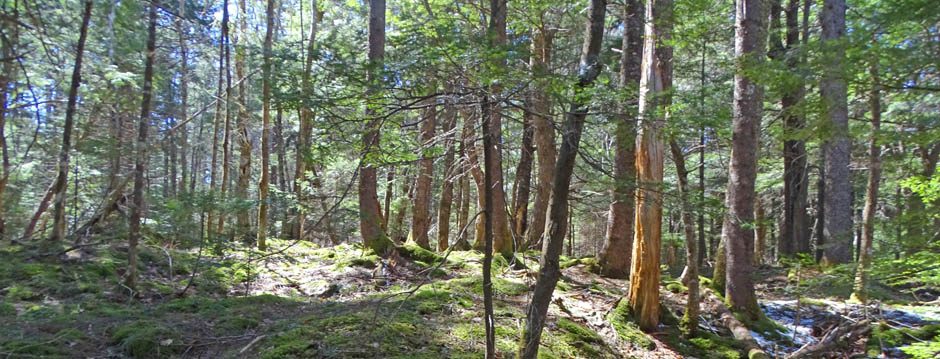
Evidently, it’s a fairly senior position.
Some extracts from indeed.com advert:
|
Department: Natural Resources & Renewables |
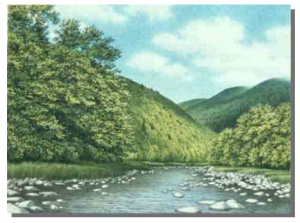
Graphic on the Protected Areas page for the Margaree River Wilderness Area.
Click on image for source.
Extracts from the Advert on ca.indeed.com
Competition # : 39024
Department: Environment and Climate Change
Location: HALIFAX
Type of Employment: Term
Union Status: NSGEU – NSPG
Closing Date: 5/17/2023
Salary Range: $2,074.62 – $3,215.50 Bi-Weekly Continue reading
Received from Forestry Maps today:
|
The Harvest Plans Map Viewer is receiving an update to its legend that aligns with the Department’s continued work towards the implementation of Ecological Forestry on Crown lands. The updated legend, shown below, has two (2) new prescriptions categories. The first prescription category is “Research Trial” and the second is “Final Felling”. The “Research Trial” prescription (seen as red in the legend) applies to proposed harvest areas that will be established to support continuing forest management research objectives on Crown lands. For more information about research conducted by the Department of Natural Resources and Renewables, you are encouraged to read more here: Biodiversity Conservation and Forestry Technical Report Series | novascotia.ca . |
A new interactive map – the Ecological Landscape Analysis Report Finder – conveys a lot of useful information. An updated Forest Development Stage Layer on the Provincial Landscape Viewer appeared to introduce some significant errors for a site I have been monitoring; NRR is working to address such errors.
Nina Newington passed on this info she received recently from Peter Bush (Old-Growth Forest Coordinator, Nova Scotia Department of Natural Resources and Renewables): Continue reading
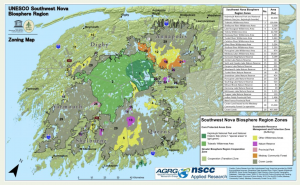 Soils, Restoring Forests on Abandoned Farmland, Invasive Plants, Agroforestry, & the Forest Triad are amongst a range of topics covered in the latest issue of the Southwest Nova Biosphere Reserve Newsletter.
Soils, Restoring Forests on Abandoned Farmland, Invasive Plants, Agroforestry, & the Forest Triad are amongst a range of topics covered in the latest issue of the Southwest Nova Biosphere Reserve Newsletter.
I think most of us are aware that SW Nova Scotia has a high level of biodiversity and a rich cultural heritage, but the special status of the area as a “Biosphere Reserve” is not so well known. Continue reading
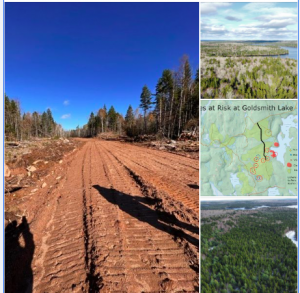 Nina Newington, writing on Extinction Rebellion Mi’kma’ki / Nova Scotia (public FB group), Mar 9, 2023:
Nina Newington, writing on Extinction Rebellion Mi’kma’ki / Nova Scotia (public FB group), Mar 9, 2023:
“Citizen scientists working to protect the forest around Goldsmith Lake got some good news last week and some excellent media coverage this week: thanks to the 17 (and counting) Species at Risk they have identified in the area, Natural Resources and Renewables has put on hold harvesting in all the cutblocks touched by the SAR. NRR’s Resource Manager for the Western Region noted that, with the discovery of multiple occurrences like this, the response would go beyond just adding individual buffers, saying the department would look for ‘alternative avenues’ to steward the area. Continue reading
Application of EA or EA type of process to FULAs (Forest Utilization License Agreement) was seen by Prof Lahey as a critical “to bring transparency and accountability to the [planning] process and to mitigate the concerns about how DNR internally manages its competing responsibilities”. Yet, there has been no mention of an EA or equivalent process in NRRs recent announcement that its FULA with Port Hawkesbery Paper has now been extended to 2043. I asked Prof. Peter Duinker, the chief architect of the EA process, “What happened to the EA?”. Evidently he has the same question.
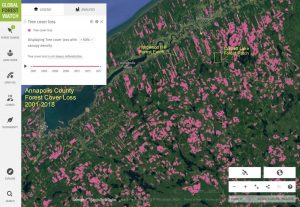
Can an EA type process for forestry on Crown lands in NS as recommended by Lahey ensure that planning for biodiversity conservation takes place on a landscape level scale and put to rest public concern about Crown land forestry practices? Clearly it can’t if it’s not conducted!
Click on images in this post for larger versions
I saw the NRR Press release Port Hawkesbury Paper Agreements Extended, Renewed (NRR Feb 8, 2023) and wondered immediately what happened to the EA (Environmental Assessment) process that I understood from the Lahey Report was supposed to apply to such agreements in future.
I figured a person who would know and might answer my question would be Dalhousie University Emeritus Professor Peter Duinker. Prof. Duinker proposed the EA process when he served as an Expert Advisor to Independent Review of Forestry Practices (see Addendum to Lahey Report, pages 99-100), clear recommendations were made to implement such a process in the Lahey Report, an Environmental Assessment project team was formed within L&F to move it all ahead and finally Prof Duinker served as a member of the consulting team contracted to develop the process.
To my surprise, Prof Duinker has the same question – I received this response shortly after I wrote to him: Continue reading
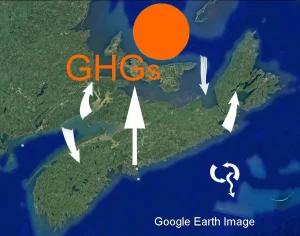
Curved arrows represent biologically mediated flows of GHGs: the straight arrow, industrial emissions of GHGs; and the symbols at bottom right, long term sequestration of carbon in the oceans. Carbon dioxide is the most important GHG in relation to forestry.
“New paper out on life cycle #GHG dynamics for different scenarios of forest-based bioenergy in Nova Scotia”.
So reads an announcement on Twitter on Jan 2, 2023 by James Steenberg, first author of the paper. The tweet provides a link to : Life-Cycle Greenhouse Gas Emissions from Forest Bioenergy Production at Combined Heat and Power Projects in Nova Scotia, Canada, by James W N Steenberg, Jérôme Laganière, Nathan W Ayer, Peter N Duinker, published in Forest Science Jan 2, 2023.
Comment. The full paper is not publicly available on the publisher’s site. I learned about the paper from a Facebook Post on Jan 20, 2023 in which a PDF of the paper was also provided. I was asked to comment. Read more
The current government deserves credit for moving faster than its predecessor to “implement the Lahey recommendations”. However in regard to Lahey’s directive that protecting ecosystems take priority over all else, the jury is still out.
From Natural Resources and Renewables News Release (italics inserted):
The Province has dedicated a high production forest zone, completing its triad model of ecological forestry.
This will support the economy while ensuring that 90 per cent of Crown land is managed with biodiversity as the top priority.

Join us for this Nature NS Talk:
“The Chebucto Peninsula and Moose Habitat Connectivity”
Tues Jan 10th at 7 pm. Recorded on YouTube
UPDATE Jan 10, 2023
A few items of interest from the webinar:
– The main reason for excluding the Chebucto Peninusla from the CORE areas for Mainland Moose are, to paraphrase, (i) the low number of moose, on the Chebucto Peninsula even in better times, and (ii) the very poor connectivity between the interior of the Chebucto Peninsula and the greater NS mainland due to development/major highways along the neck of the peninsula. The target is to bring the population up to 5000 animals province-wide and the Chebucto Peninsula will simply not play a significant role in reaching that target. K.B., a member of the Moose Recovery Team said she strongly advocated for including the Chebucto Peninusula as a CORE area, but understood the reasons that was rejected by the team as a whole and she noted that nevertheless, the moose on the Chebucto Peninsula are still protected.

The Chebucto Peninsula, courtesy of Plasma_east
– There was a lot of discussion of the need for increasing wildlife connectivity between the Chebucto Peninsula and the greater NS mainland regardless of the moose issue. Concern was expressed that the NS Government is not giving much attention to this issue, e.g. as massive new road building is announced.
– C.C. emphasized the importance of ‘building up, not out’ in urban areas so as reduce impacts on wildlife habitat in more rural areas; social equity is part of the issue as well.
– M.L. noted that a lot of the interior of Chebucto Peninsula is roadless and protected; development occurs mostly around the periphery. Significantly, the interior generally hosts very few white-tailed deer*
*Low deer numbers are very much a positive benefit for moose because of the role of deer in propagating moose brainworm.
– M.L., who knows the area well and has been looking for moose and signs of moose (especially their browse of red maple), is confident that there are at least 5 animals on the Chebucto Peninsula currently, and that there has been calving in recent years. He observed a dead moose this past December, the death apparently due to natural causes (he mentioned predation) rather than poaching. Continue reading